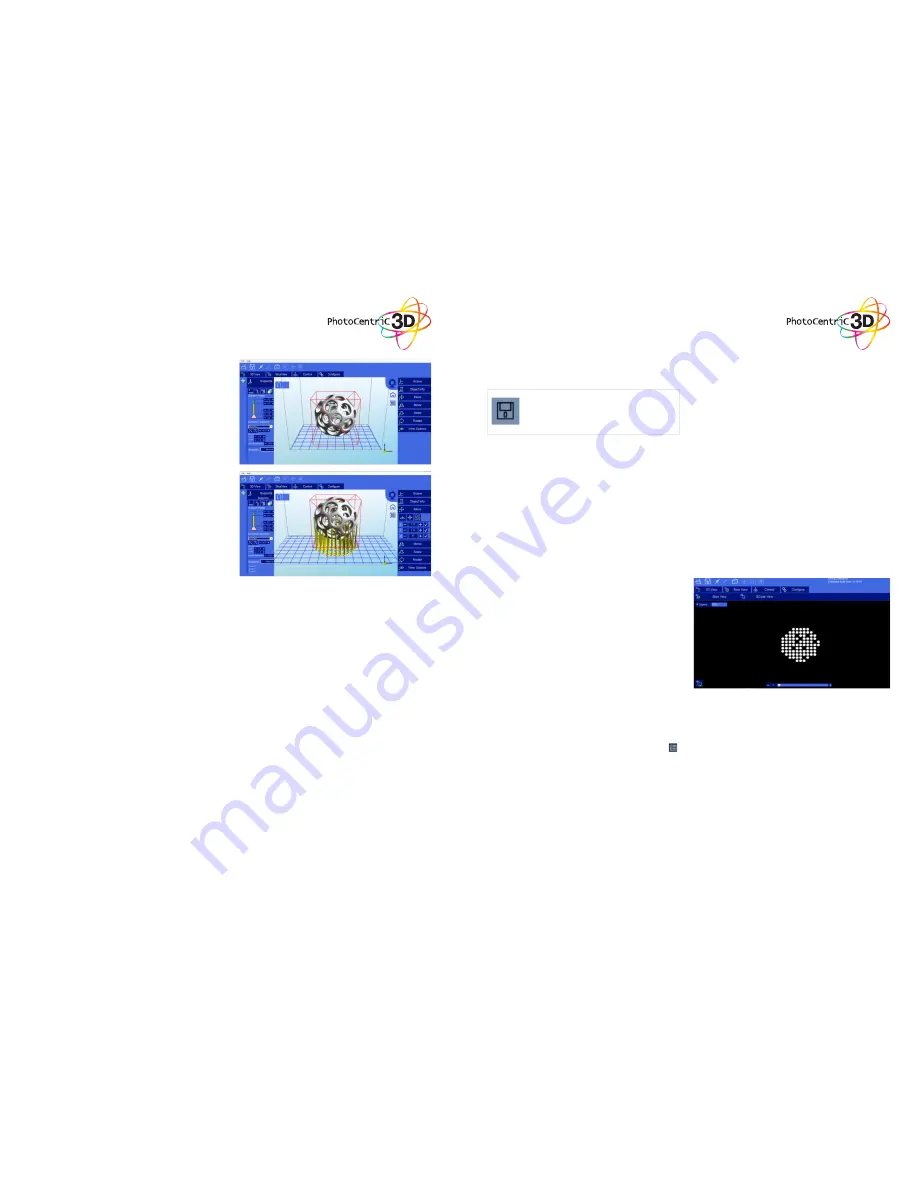
25
26
9. Working with Model Support tools
Using Supports
Supports are sometime required to properly attach a
model to the build space. Because of the nature of DPP
the lower layers must be supported by the supports
unless it has a wide surface in the first layers. We
recommend checking no supports pass through your
object. If they do, you can delete them and manually
add others if needed.
Adding a single Support
A single support can be generated by clicking the
manual support button.
Moving Supports
After a manual or automatic support has been
generated, individual supports can be moved around
the x:y plane the same way models can be moved.
Select the support by double clicking on it to select it,
and hold down the ‘Shift’ key on your keyboard and
move the mouse. Supports will automatically scale
vertically under the model they support.
Angled Supports
Supports can be angled inwards towards the objects
they support. This can often resolve clearance issues
with vertical supports. You can turn a vertical support
into an angled support by selecting it, and holding the
‘Ctrl’ key and clicking on the model you want to support.
Manual Configuration
Under the Support Generation view, you can click
‘show downward facing polys’. This will highlight all
polygons in the model that are pointed downward by
the specified degree. This helps you manually place
supports under un-supported downward facing areas
of a model.
Auto Support on Grid
After a model is loaded into the scene and selected,
you can automatically generate a ‘bed of nails’ support
for the model by selecting . You can specify the grid
spacing and the size of the generated supports. If you
wish to only generate supports on downward facing
polygons, check the boxes under ‘support general’ and
‘generate only on downward’
Adaptive supports
You can add supports to areas in the model that
are unsupported. There are 2 algorithms to help you
accomplish this.
There are two buttons for each of the available options.
• The first option has the same name as the screen
itself (Slice View). In this setting we can see (as
shown in the image) each successive layer of the
generated “Slicing”. With the lower bar we can
scroll through the entire slicing result to check
each of the layers. In the upper left corner we
can see the total number of layers that have been
generated. In the lower left corner we have a ( )
button to turn the projector on and expose the
selected layer. This can be useful to check the
positioning of the vat.
• G-Code View: On this screen you can see the
G-code generated during the “Slicing” operation.
This option is intended for advanced users. We
recommend to leave this screen untouched.
11. Slice View
In the Slice View screen we get the following
information:
A display of the current slice where the black
background will not cure the resin and the white
image cures the resin to form the layer. There is a
slider which allows you to view each slice to check for
any problems.
After one or more models have been loaded and
manipulated on the build platform, the entire scene
can be saved as an STL model for later use. Simply
click on the ‘File->Save Scene STL’ menu item to save
the scene model. This will flatten all models in a scene
into a single STL file. Scenes can also be saved to
CWS files.. These scene files can be used to create a
scene with supports, slice the scene, and later load to
print your scene without the need for re-slicing.
Click to save the current object as a .STL or
.CWS file. The .CWS format allows you to prepare
a scene to be printed repeatedly in the future,
together with supports and positioning.
10. Saving a Scene
















